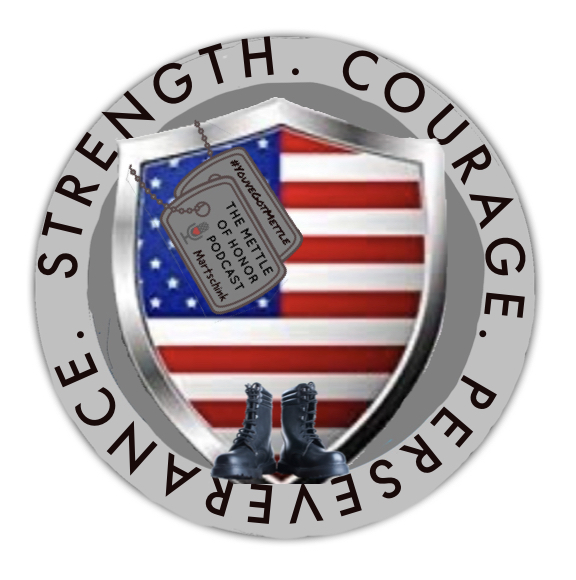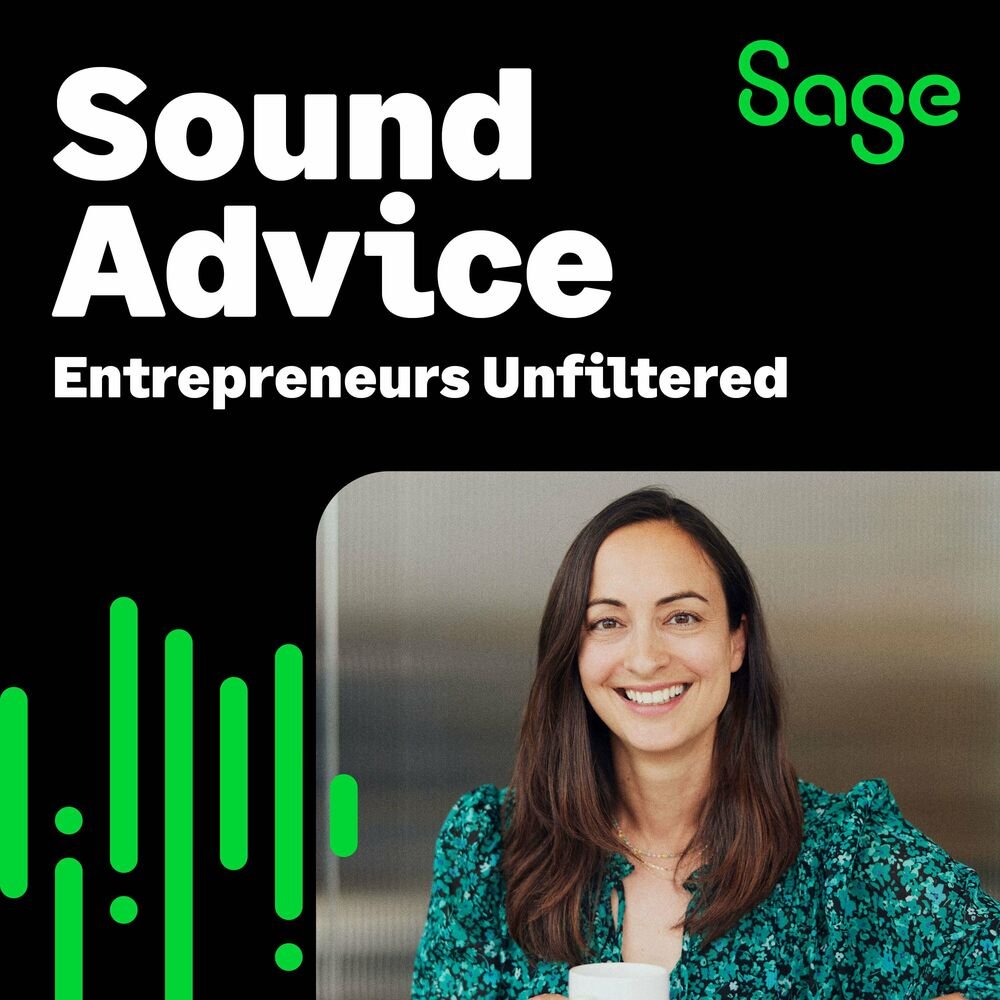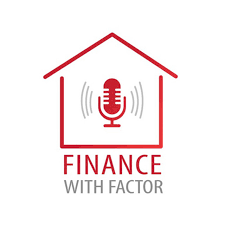
Protrusive Dental Podcast

Basic Member
Ownership Verification Center
And, schedule a video verification call with us. Don't worry it takes a few minutes only :)
Latest Episodes
Parenthood and Dentistry – Life Leverage for Unique Challenges – IC065
How do you balance a high-performance dental career with being an effective parent?
What strategies help you stay sane amidst the organized chaos of family life?
How can showing up as your best self benefit both your patients and your children?
Dr. Shandy Vijayan and Dr. Raabiha Maan join Jaz in this nonclinical episode to share their experiences of parenthood in dentistry. From the unique perspectives of two dentist-moms and the dad viewpoint, they discuss the real-life challenges of raising children while maintaining personal well-being.
They also share practical tips, book recommendations, and actionable strategies for self-care and emotional regulation—helping you create a balanced family life while thriving in your career.
During the episode, Jaz also mentions KARRI — a fun, screen-free voice messenger that helps kids stay safely connected with parents and friends, without social media or internet access.
Loved by kids. Trusted by parents. Get 50% off via: www.protrusive.co.uk/karri
Key Takeaways
- Life comes in “seasons”; early parenting (~0–8 yrs) is intense but temporary.
- Reduce clinical load early to focus on children; career focus increases after ~12 yrs.
- Prioritize time with kids over tasks; coordinated parenting schedules help.
- House help significantly reduces stress, frees energy for quality interactions.
- Support networks (family, in-laws, professional communities) are essential.
- Grandparents: allow flexibility; avoid micromanaging childcare.
- Returning to work: stress, costs (GDC, indemnity, childcare), skill gaps, guilt.
- Dentistry = high-performance + emotional labor; manage energy carefully.
- Quick mental reset between work/home recommended; part-time can boost longevity.
- Parent happiness + strong parental relationship = major factor in kids’ emotional regulation.
- Run family like a small business: systems, schedules, clear roles.
- Self-regulation, EQ, and self-care benefit family, patients, and professional life.
Highlights of this episode:
- 00:00 Teaser
- 01:00 Intro
- 02:50 Shandy’s Story: Juggling Multiple Clinics
- 08:11 Raabiha’s Story: Managing a Practice and Family
- 08:58 Interjection
- 16:03 Raabiha’s Story: Managing a Practice and Family
- 18:17 Life Seasons and Reducing Clinical Commitment
- 21:05 The Value of Help and Support Networks
- 27:00 Financial and Emotional Challenges in Dentistry
- 33:03 Midroll
- 36:22 Financial and Emotional Challenges in Dentistry
- 36:24 Balancing Work and Home Life
- 42:26 Time Management and Setting Boundaries
- 46:51 Self-Care and Emotional Regulation
- 53:53 Upcoming Wellness Event
- 59:01 Final Thoughts and Future Ideas
- 59:49 Outro
Ready to take the next step?
- Check out this great resource for new dentists and trainees: Dentistry in a Nutshell
- Join the community at the Dental Mums Network to connect with dentist‑parents balancing clinical work and family life.
Revive 2026 – A Wellness Event Like No Other (6 hours CPD)
🗓 Saturday 24th January 2026
📍 Leonardo Royal Hotel, St Paul’s, London
Revive 2026 is your invitation to pause, breathe, and reconnect- a full-day experience designed for women in dentistry who are ready to start the year with purpose, calm, and clarity.
Loved this? Dive deeper into Parenthood and Dentistry – IC025 (Even If You’re Not a Parent!)
#InterferenceCast #BeyondDentistry #Communication
This episode is eligible for 0.75 CE credit via the quiz on Protrusive Guidance.
This episode meets GDC Outcome: B
AGD Subject Code: 770 SELF IMPROVEMENT
Aim: To explore strategies for managing work-life balance in dentistry, focusing on early parenthood, emotional regulation, and professional sustainability.
Dentists will be able to –
- Describe key challenges dentists face balancing clinical practice with early parenthood.
- Identify practical strategies for maintaining emotional energy, setting boundaries, and creating support networks.
- Apply approaches to integrate self-care, household management, and EQ development to enhance personal and professional well-being.
Moving to USA for Dentistry (Advanced Standing Programs and Specialist Pathways for International Dentists) – IC064
Thinking of moving to the USA as a dentist?
Wondering what exams, applications, and documents you’ll need to practice or specialize there?
Curious about how much it costs — and what life as a dentist in the States is really like?
Dr. Hazel Kerr and Dr. Dorrin Reyhani join Jaz for a deep dive into everything you need to know about moving to America as a dentist. Both UK-trained and now faculty at UPenn, they share their personal journeys and break down the full pathway — from exams like the INBDE and TOEFL, to transcripts, personal statements, and application timelines.
They also discuss what it’s like working in the US compared to the UK, including earning potential, patient culture, and training opportunities. Whether you want to complete an advanced standing program, pursue a specialty, or bring your skills back home, this episode gives you a clear roadmap to make it happen.
Key Takeaways
- The journey to becoming a dentist varies significantly by country.
- Specializing in dentistry can open more opportunities than general practice.
- Board certification enhances professional status and may offer insurance benefits.
- International dentists have specific routes to practice in the US.
- Scholarships can significantly reduce the financial burden of dental education.
- Teaching positions can provide pathways to practice without additional costs. Faculty primarily teach and supervise dental students in clinics.
- Early preparation for the INBD exam is crucial for success.
- Clinical experience and a strong portfolio are essential for applications.
- Networking and externships can enhance application prospects.
- Understanding the application process can alleviate stress for international students.
- Cultural differences impact how dental care is valued and perceived.
Highlights of this episode:
- 00:00 Teaser
- 00:55 Introduction
- 04:15 Journey to Specialization
- 12:49 Understanding the Certification and Board Process
- 15:35 Exploring Different Routes for International Dentists
- 18:17 Financial Considerations and Scholarships
- 25:48 US Difficulty and Competitiveness
- 29:35 Choosing Between General and Specialty Routes
- 31:11 Navigating State-Specific Licensing
- 33:28 Teaching and Clinical Responsibilities
- 35:03 Midroll
- 38:24 Teaching and Clinical Responsibilities
- 43:01 Application Process and Exams
- 52:07 Residency and Career Pathways
- 57:39 Application Portals
- 01:00:35 Work Experience Before Specialization
- 01:03:22 Why Dentists Choose to Work in the US
- 01:09:36 Finishing the Program and Looking Ahead
- 01:12:01 Outro
If you enjoyed this episode, you’ll definitely be inspired by The American Dental Dream – PDP002.
#InterferenceCast #CareerDevelopment
This episode is not eligible for CPD/CE points, but never fear, there are hundreds of hours of CPD waiting for you on the Ultimate Education Plan.
Understanding Cracked Tooth Syndrome and the Dental Occlusion Triad – PS019
You’re doing a routine exam when you spot it – a stained hairline crack snaking across the marginal ridge of a molar. Your patient hasn’t mentioned any symptoms… Yet.
Should you sound the alarm? Monitor and wait? Jump straight to treatment?
Cracked teeth are one of dentistry’s most misunderstood diagnoses. Colleagues debate whether to crown or monitor. And that crack you’re staring at? It could stay dormant for years—or spiral into an extraction by next month.
So what separates the teeth that crack catastrophically from those that quietly hold together?
In this episode, I am joined by final-year dental student Emma to crack the code (pun intended) on cracked tooth syndrome.
We break down the easy-to-remember “position, force, time” framework to help you spot risk factors before disaster strikes, and share a real-world case of a 19-year-old bruxist whose molar was saved by smart occlusal thinking.
If you’ve ever felt uncertain about diagnosing, explaining, or managing cracked teeth, this episode will change how you think about every suspicious line you see.
Need to Read it? Check out the Full Episode Transcript below!
Key Takeaways
- Risk factors include large restorations and bruxism.
- Occlusion plays a significant role in tooth health.
- Diet can impact the integrity of teeth.
- Every patient presents unique challenges in treatment.
- Communication about dental issues is key for patient care.
- Certain teeth are more prone to fractures due to their anatomy.
- The weakest link theory explains why some patients experience more dental issues.
- Patient history is crucial in predicting future dental problems.
- The age and dental history of a patient influence treatment decisions.
- Understanding occlusion is essential for diagnosing and treating cracked teeth.
- The location of a tooth affects the force it experiences during chewing.
- Bruxism increases the risk of tooth fractures.
- Tooth contacts and forces play a critical role in diagnosing issues.
- Opposing teeth can provide valuable insights into tooth health.
- Effective communication is essential in managing cracked teeth.
- Stains on teeth can indicate deeper issues with cracks.
- Monitoring and documenting cracks over time is crucial for patient care.
Highlights of this episode:
00:00 Teaser
00:49 Intro
03:25 Emma’s Dental School Updates
07:18 What is Cracked Tooth Syndrome (CTS)?
10:02 Crack Progression and Severity
12:45 Risk Factors
14:54 Position–Force–Time Framework
21:53 Which Teeth Fracture Most Often?
25:32 Midroll
28:53 Which Teeth Fracture Most Often?
30:37 The Weakest Link Theory
34:05 Diagnostic Tools
37:56 Treatment Planning
39:42 Case Study – High Force Patient
47:27 Communication and Patient Management
51:03 Key Clinician Takeaways
53:03 Conclusion and Next Episode Preview
53:42 Outro
Check out the AAE cracked teeth and root fracture guide for excellent visuals and classification details.
Literature review on cracked teeth – examines evidence around risk factors, prevention, diagnosis, and treatment of cracked teeth.
Want to learn more about cracked teeth? Have a listen to PDP028 and PDP098 – both packed with practical tips and case-based insights.
#BreadAndButterDentistry #PDPMainEpisodes #OcclusionTMDandSplints
This episode is eligible for 0.75 CE credits via the quiz on Protrusive Guidance.
This episode contributes to the following GDC development outcomes:
- Outcome C
AGD Subject Code: 250 – Operative (Restorative) Dentistry
Aim: To help dental professionals understand the causes, diagnosis, and management of cracked teeth through a practical, evidence-based approach. It focuses on identifying risk factors using the Position–Force–Time framework and improving patient outcomes through informed communication and tailored treatment planning.
Dentists will be able to:
- Explain the aetiology and progression of cracked tooth syndrome
- Identify high-risk teeth and patient factors—such as restoration design, occlusal contacts, and parafunctional habits—that predispose to cracks
- Communicate effectively with patients about the significance of cracks, prognosis, and monitoring options, improving patient understanding and consent.
Safeguarding Children – Actions, Scripts and Guidance – PDP251
Are you confident in spotting a child at risk of neglect?
Do you know what to do if you witness abuse in your practice?
How can you raise concerns safely while protecting both the child and your team?
This episode with Dr. Christine Park provides tangible actions, practical scripts, and clear guidance for managing challenging scenarios—like seeing an adult hit a child in the waiting room or recognizing neglect in the dental chair. These are situations dental school rarely prepares us for.
Every practice needs clear protocols for safeguarding. This episode acts as a North Star, helping you stay compliant while ethically doing the right thing. If you treat children, you must listen to this episode and share it with every colleague who treats children.
Protrusive Dental Pearl: Find the phone number of your local child safeguarding board / social services. Verify it, then display it where you and your team can quickly access it.
Need to Read it? Check out the Full Episode Transcript below!
Key Takeaways
- Dentists are trained observers of family dynamics.
- Recognizing normal behavior is key in dental care.
- Unconscious observations can guide professionals.
- Feeling uncomfortable about a situation is a valid signal.
- Empowerment comes from trusting your instincts.
- Dental care professionals see many aspects of families.
- It’s important to act on uncomfortable feelings.
- Observation skills are crucial for effective care.
- Children’s interactions reveal much about family health.
- Awareness of discomfort can lead to better outcomes.
Highlights of this episode:
00:00 Teaser
00:59 Intro
02:40 Pearl – Child Protection Hotline
05:23 Dr. Christine Park’s Background and Expertise
08:37 The Role of Dentists in Safeguarding Children
11:19 Practical Scenarios and Guidelines for Safeguarding
15:35 Recognizing Silent Cases of Neglect
17:29 Team Collaboration and Support in Safeguarding
21:58 Guidelines and Policies for Effective Safeguarding
22:03 Midroll
25:24 Guidelines and Policies for Effective Safeguarding
28:32 Handling a Tough Safeguarding Scenario
32:18 Dealing with Poor Oral Hygiene and Neglect
39:12 Managing Parental Reactions and Consent
43:08 The Importance of Safeguarding in Dentistry
45:34 Further Guidance and Resources
46:10 Outro
📢 Safeguard your young patients with confidence!
Catch Dr. Christine Park at the Scottish Dental Show in June or via her NES webinars.
Check out the BSPD guidelines on dental neglect —an essential resource for any dentist treating children
✉️ Get in Touch with Dr. Christine:
- General: Christine.park@glasgow.ac.uk
- Patient-info: Christine.park7@nhs.scot
If you loved this episode, don’t miss How to Manage Children in Dental Pain – Paediatric Emergencies – PDP159
#PDPMainEpisodes #Communication #CareerDevelopment
This episode is eligible for 0.75 CE credit via the quiz on Protrusive Guidance.
This episode meets GDC Outcomes A and D.
AGD Subject Code: 430 PEDIATRIC DENTISTRY (Identification and reporting of child abuse)
Aim: To equip dental professionals with practical knowledge and skills to recognize, respond to, and appropriately escalate safeguarding concerns involving children in dental practice.
Dentists will be able to –
- Identify key signs and red flags of child neglect, abuse, or welfare concerns in dental patients.
- Apply clear communication strategies to discuss concerns with parents/caregivers and involve relevant authorities.
- Follow practice-based and multi-agency procedures for safeguarding, including documenting observations and escalation.
Occlusion for Aligners – Clinical Guidelines for GDPs – PDP250
Let’s be honest – the occlusion after Aligner cases can be a little ‘off’ (even after fixed appliances!)
How do you know if your patient’s occlusion after aligner treatment is acceptable or risky?
What practical guidelines can general dentists follow to manage occlusion when orthodontic results aren’t textbook-perfect?
Jaz and Dr. Jesper Hatt explore the most common challenges dentists face, from ClinCheck errors and digital setup pitfalls to balancing aesthetics with functional occlusion.
They also discuss key strategies to help you evaluate, guide, and optimize occlusion in your patients, because understanding what is acceptable and what needs intervention can make all the difference in long-term treatment stability and patient satisfaction.
Protrusive Dental Pearl: Harmony and Occlusal Compatibility
- Always ensure restorative anatomy suits the patient’s natural occlusal scheme and age-related wear. If opposing teeth are flat and amalgam-filled, polished cuspal anatomy will be incompatible — flatten as needed to conform.
Need to Read it? Check out the Full Episode Transcript below!
Key Takeaways
- Common mistakes in ClinCheck planning often stem from occlusion issues.
- Effective communication and documentation are crucial in clinical support.
- Occlusion must be set correctly to ensure successful treatment outcomes.
- Understanding the patient’s profile is essential for effective orthodontics.
- Collaboration between GPs and orthodontists can enhance patient care.
- Retention of orthodontic results is a lifelong commitment.
- Aesthetic goals must align with functional occlusion in treatment planning.
- Informed consent is critical when discussing potential surgical interventions. The tongue plays a crucial role in orthodontic outcomes.
- Spacing cases should often be approached as restorative cases.
- Aligners can achieve precise spacing more effectively than fixed appliances.
- Enamel adjustments may be necessary for optimal occlusion post-treatment.
- Retention strategies must be tailored to individual patient needs.
- Case assessment is vital for determining treatment complexity.
Highlights of this episode:
00:00 Teaser
00:59 Intro
02:53 Pearl – Harmony and Occlusal Compatibility
05:57 Dr. Jesper Hatt Introduction
07:34 Clinical Support Systems
10:18 Occlusion and Aligner Therapy
20:41 Bite Recording Considerations
25:32 Collaborative Approach in Orthodontics
30:31 Occlusal Goals vs. Aesthetic Goals
31:42 Midroll
35:03 Occlusal Goals vs. Aesthetic Goals
35:25 Challenges with Spacing Cases
42:19 Occlusion Checkpoints After Aligners
50:17 Considerations for Retention
54:55 Case Assessment and Treatment Planning
58:14 Key Lessons and Final Thoughts
01:00:19 Interconnectedness of Body and Teeth
01:02:48 Resources for Dentists and Case Support
01:04:40 Outro
Free Aligner Case Support!
Send your patient’s case number and get a full assessment in 24 hours—easy, moderate, complex, or referral. Plus, access our 52-point planning protocol and 2-min photo course. No uploads, no cost.
Learn more at alignerservice.com
If you enjoyed this episode, don’t miss: Do’s and Don’ts of Aligners [STRAIGHTPRIL] – PDP071
#PDPMainEpisodes #OcclusionTMDandSplints #OrthoRestorative
This episode is eligible for 1 CE credit via the quiz on Protrusive Guidance.
This episode meets GDC Outcomes A and C.
AGD Subject Code: 370 ORTHODONTICS (Functional orthodontic therapy)
Aim: To provide general dentists with practical guidance for managing occlusion in aligner therapy, from bite capture to retention, including common pitfalls, functional considerations, and case selection.
Dentists will be able to –
- Identify common errors in digital bite capture and occlusion setup.
- Understand the impact of anterior inclination and mandibular movement patterns on occlusal stability.
- Plan retention strategies appropriate for aligner and restorative cases.
Surgical Extrusion Technique Update – Alternative to Ortho Extrusion or CLS – PDP249
Do you have a “hopeless” retained root you’re ready to extract?
Think implants, dentures, or bridges are the only way forward?
What if there’s a way to save that tooth — predictably and biologically?
In this episode, Dr. Vala Seif shares his experience with the Surgical Extrusion Technique — a game-changing approach that lets you reposition the root coronally to regain ferrule and restore teeth once thought impossible to save.
Jaz and Dr. Seif dive into case selection, atraumatic technique, stabilization, and timing, all guided by Dr. Seif’s own SAFE/SEIF Protocol, developed from over 200 successful cases.
Protrusive Dental Pearl: When checking a ferrule, consider height, thickness, and location of functional load. Upper teeth: prioritize palatal ferrule. Lower teeth: prioritize buccal. Tip: do a partial surgical extrusion, rotate the tooth 180°, then stabilize.
Need to Read it? Check out the Full Episode Transcript below!
Key Takeaways
- Surgical extrusion is a technique-sensitive procedure that requires careful planning.
- Case selection is crucial for the success of surgical extrusion.
- A crown-root ratio of 1:1 is ideal for surgical extrusion.
- Patients are often more cooperative when they see surgical extrusion as their last chance to save a tooth.
- Surgical extrusion can be more efficient than orthodontic extrusion in certain cases.
- The importance of ferrule in dental restorations cannot be overstated.
- Proper case selection is crucial for successful outcomes.
- Atraumatic techniques are essential for preserving tooth structure.
- The ‘Safe Protocol’ offers a structured approach to surgical extrusion.
- Patient communication is key to managing expectations.
- Flowable composite is preferred for tooth fixation post-extraction.
- Understanding root morphology is important for successful extractions.
Highlights of this episode:
- 00:00 Surgical Extrusion Podcast Teaser
- 01:07 Introduction
- 02:38 Protrusive Dental Pearl
- 05:53 Interview with Dr. Vala Seif
- 08:57 Definition and Philosophy of Surgical Extrusion
- 15:30 Indications, Case Selection, and Root Morphology
- 21:37 Comparing Surgical and Orthodontic Extrusion
- 25:54 Crown Lengthening Drawbacks
- 28:39 Occlusal Considerations
- 33:53 Midroll
- 37:16 Definition and Importance of the Ferrule
- 43:07 Clinical Protocols and Fixation Methods
- 01:00:01 Post-Extrusion Care and Final Restoration
- 01:05:04 Learning More and Final Thoughts
- 01:09:29 Outro
Further Learning:
- Instagram: @extrusionmaster — case examples, papers, and protocol updates.
- Online and in-person courses in development (Europe + global access).
Loved this episode? Don’t miss “How to Save ‘Hopeless’ Teeth with the Surgical Extrusion Technique” – PDP061
#PDPMainEpisodes #OralSurgeryandOralMedicine #OrthoRestorative
This episode is eligible for 1 CE credit via the quiz on Protrusive Guidance.
This episode meets GDC Outcomes C.
AGD Subject Code: 310 ORAL AND MAXILLOFACIAL SURGERY
Aim: To understand the biological and clinical principles of surgical extrusion as a conservative alternative to orthodontic extrusion or crown lengthening for managing structurally compromised teeth.
Dentists will be able to –
- Identify suitable clinical cases for surgical extrusion, including correct root morphology and crown–root ratios.
- Describe the step-by-step SAFE Protocol for atraumatic surgical extrusion, fixation, and timing of endodontic treatment.
- Evaluate the advantages, limitations, and biomechanical considerations of surgical extrusion compared with orthodontic extrusion and crown lengthening.
Replacement Options for Incisors – Denture? Bridge? Implant? – PS018
Are you confident in replacing a single missing central incisor?
When is a denture the right option — and when should you consider a bridge or implant instead?
Why is the single central incisor one of the hardest teeth to replace to a patient’s satisfaction?
In this Back to Basics episode, Jaz and Protrusive Student Emma Hutchison explore the unique challenges of replacing a single central incisor. They break down when each option — denture, resin-bonded bridge, conventional bridge, or implant — is appropriate, and the biological and aesthetic factors that influence that decision.
They also share key communication strategies to help you manage expectations, guide patients through realistic treatment choices, and avoid disappointment when dealing with this most visible and demanding tooth.
Need to Read it? Check out the Full Episode Transcript below!
Key Takeaways:
- Replacing a single central incisor isn’t just about technical skill — it’s about communication and case selection.
- Success comes from helping patients understand that a restoration replaces a tooth’s function and appearance, not nature itself.
- Clear conversations about expectations, limitations, and maintenance are what turn a difficult aesthetic case into a satisfying long-term result.
Highlights of this episode:
00:00 Teaser
00:28 Intro
01:56 From Dental Nurse to Final-Year Student
07:38 Challenges and Considerations in Replacing Central Incisors
12:51 Patient Communication and Treatment Planning
18:33 Discussing Treatment Options and Enamel Considerations
21:16 Communicating Options and Guiding Patient Decisions
25:51 Choosing Between Fixed and Removable Options
27:10 Midroll
30:31 Choosing Between Fixed and Removable Options
31:05 Handling Old Crowns and Patient Communication
34:17 Conventional vs. Resin-Bonded Bridges
37:57 Occlusal Load, Function, and Implant Considerations
43:40 Digital Workflow in Dentistry
45:54 Managing Aesthetic Expectations
48:34 Final Thoughts and Recommendations
52:59 Outro
🎧 Want to feel confident with prosthodontics?
Explore these essential follow-ups to this episode:
- Dentures vs Bridges with Michael Frazis
- Crowns vs Onlays with Alan Burgin
- Dentures with Finlay Sutton
- RBB Masterclass on the Protrusive Guidance App
Quick, practical lessons to sharpen your planning, communication, and anterior aesthetics — all in your pocket.
#ProsthoPerio #OcclusionTMDandSplints #Communication #BreadandButterDentistry
This episode is eligible for 0.75 CE credit via the quiz on Protrusive Guidance.
This episode meets GDC Outcomes C.
AGD Subject Code: 610 – Fixed Prosthodontics
Aim: To provide a clear, clinical overview of replacing a single missing incisor — focusing on when to choose a denture, bridge, or implant, and how to communicate realistic expectations.
Dentists will be able to –
- Identify the key biological, functional, and aesthetic challenges in replacing a central incisor.
- Compare the indications, advantages, and limitations of dentures, resin-bonded bridges, conventional bridges, and implants.
- Communicate realistic outcomes, limitations, and maintenance expectations effectively to patients.
“I Committed Fraud – Learn from My Mistakes” – PDP248
What if one bad decision completely changed the course of your career?
In this exclusive, members-only episode, Jaz sits down with a fellow dentist from our community who shares his raw, honest story about a moment of misjudgment — committing fraud — and the painful lessons that followed.
This isn’t about blame. It’s about insight, accountability, and redemption.
From the shock of investigation and court hearings, to the struggle of rebuilding trust and identity, this conversation shines a light on what really happens behind closed doors when things go wrong.
The aim of this podcast was to hopefully deter colleagues from temptation which can affect anyone at any time.
How to Watch the Full Episode
This is a members-only podcast episode due to its sensitive nature.
You can access it by creating a free Community account at: https://www.protrusive.app
Highlights of this episode:
00:00 Teaser
00:49 Introduction
05:49 End Screen
Love this episode? Don’t miss Divorce, Alcohol and Rough Patches – Overcoming Adversities (IC040)
#PDPMainEpisodes #BeyondDentistry
This episode is eligible for 0.5 CE credits via the Quiz on Protrusive Guidance.
This episode meets GDC Outcomes A and D
AGD Subject Code: 555 Ethics in Dentistry
Aim: To reflect on the ethical, professional, and emotional lessons learned from a real-life case of dental fraud, highlighting accountability, insight, and rehabilitation while identifying practical steps to prevent similar incidents.
Dentists will be able to –
- Recognise how workplace pressures, lack of mentorship, and poor oversight can lead to ethical lapses.
- Understand the legal, professional, and emotional consequences of dishonesty and poor record keeping.
- Identify support systems, coping strategies, and self-reflective tools to prevent burnout and maintain integrity.
Occlusograms are Lying To Us! Don’t Trust the ‘Heat Map’ – PDP247
Ever had a patient swear their bite feels “off” – even though the articulating paper marks look perfect and you’ve adjusted everything twice over? Or maybe you’ve placed a beautiful quadrant of onlays, only to have them return saying, “these three teeth still feel proud.” If that sounds familiar, you’re not alone.
In this episode, I’m joined (in my car, no less!) by Dr. Robert Kerstein, who was back in the UK to teach about digital occlusion and the power of the T-Scan and ‘disclusion time reduction therapy’. We dig into why a patient’s bite can still feel “off” even when everything looks right, how timing is just as important as force, and why splints and Botox don’t always solve TMD.
Robert explains why micro-occlusion is the real game-changer, how scanners could mislead you, and why dentistry still clings to articulating paper.
So if you’ve ever wondered why “perfect” cases still come back with bite complaints, or whether timing data can actually prevent fractures and headaches, this episode will give you plenty to chew on – pun intended.
Need to Read it? Check out the Full Episode Transcript below!
Key Takeaways:
- Micro-occlusion, not just “dots and lines,” is the real driver of patient comfort and long-term tooth health.
- T-Scan measures both force and timing, which scanners and articulating paper cannot capture.
- Many patients show signs of occlusal damage without symptoms.
- Disclusion Time Reduction (DTR) treats TMD neurologically without splints, Botox, or TENS.
- Relying on occlusograms alone for guiding reduction is risky.
- Dentists can reduce post-treatment complaints by balancing micro-occlusion with T-Scan.
- Adopting T-Scan requires proper training.
- CR can be a convenient reference point, but MIP works well in most cases if micro-occlusion is managed.
- Objective, repeatable data builds patient trust and provides medico-legal reassurance.
Highlights of this episode:
- 00:00 Teaser
- 01:13 Intro
- 4:41 Protrusive Dental Pearl – Removing a Temporarily Cemented Crown
- 06:39 Introduction
- 08:48 Global Training Footprint
- 09:32 What Robert Teaches (DTR & T-Scan)
- 09:55 Occlusion as Neurologic
- 10:33 Macro vs Micro-Occlusion
- 11:33 Neural Pathway
- 15:00 MIP vs CR Framing
- 16:48 Signs Without Symptoms
- 19:16 Silent Majority
- 20:08 Why Treat Asymptomatic Signs
- 20:50 Disclusion and MIP
- 22:28 Occlusogram Caveats
- 24:53 Midroll
- 28:14 Occlusogram Caveats
- 28:29 Why Occlusograms Mislead
- 29:21 Don’t Adjust From Color Alone
- 31:47 What Pressure/Timing Enable Clinically
- 33:02 Prosthetic Reality Check
- 34:46 Patient-Perceived Comfort
- 35:29 Why Isn’t T-Scan Everywhere?
- 36:29 Political Resistance
- 37:42 CR as Utility
- 38:18 MIP and Vertical Dimension.
- 39:48 Macro ≠ Micro
- 41:00 Material Longevity Benefits
- 41:57 T-Scan Training
- 42:58 Three Competencies to Master
- 44:20 Micro-Occlusion Rules
- 44:46 Outro
If you want to get more clued up on TMD, tune into this episode for the latest insights and guidelines! PDP213 – TMD New Guidelines – however be warned that the guidelines are contradictory to what Dr. Kerstein advises….ah the wonderful world of TMD!
#OcclusionTMDandSplints #OrthoRestorative
This episode is eligible for 0.5 CE credit via the quiz on Protrusive Guidance.
This episode meets GDC Outcomes A, C.
AGD Subject Code: 250 – Clinical Dentistry (Occlusion/Restorative)
Aim: to explore the role of micro-occlusion and timing in TMD and restorative success, highlighting how tools like T-Scan provide data that other tools cannot. This episode seeks to give dentists practical insights into diagnosing, preventing, and treating occlusal problems with greater accuracy.
Dentists will be able to:
- Describe the role of micro-occlusion and disclusion time in TMD symptoms and tooth wear.
- Recognising the limitations of traditional methods of occlusion adjustment.
- Understand how objective occlusion data supports comfort, longevity of restorations, and preventive care.
Bio of Protrusive Dental Podcast
Protrusive Dental Podcast, is a forward-thinking podcast designed for dental professionals. Hosted by Jaz Gulati, a passionate dental practitioner, this podcast brings you insightful conversations with guest speakers, covering a wide range of hot topics in Dentistry.
With a focus on sharing valuable clinical tips, discussing continuing education opportunities, and exploring ways to add value to your life and career, the Protrusive Dental Podcast is a valuable resource for dental professionals seeking to stay ahead in the field.
Each episode delves into various subjects, including occlusion, working abroad, course reviews, hot topics in Dentistry, clinical tips, and personal development. Jaz Gulati's enthusiasm for Dentistry shines through as he engages in informative discussions with experts and thought leaders in the dental industry.
Similar Podcasts
"The Teacher Career Coach Podcast," hosted by Daphne Gomez.
The VCpreneur: Startups | Venture Capital | Entrepreneurship | Fundraising, hosted by Digjay Patel.
FinancialFox, is a podcast that brings you key interviews with technology leaders.
Sound Advice: Entrepreneurs Unfiltered, Hosted by journalist Kate Bassett.
Real-life stories from fellow SaaS founders and product people. In the first season we talk about user onboarding.








